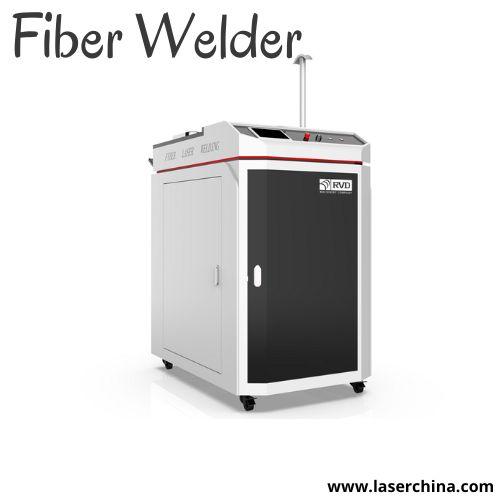In the modern manufacturing landscape, precision and efficiency are critical. A fiber welder is an advanced tool designed to address these demands in metal fabrication and industrial applications. Utilizing focused fiber laser technology, it delivers consistent results across various materials, ensuring clean welds and precise joins without excessive heat distortion. This technology has transformed industries where accuracy and durability are paramount, providing a solution for metalworking, automotive parts, aerospace components, and intricate industrial projects.
Fiber welding operates on a principle of laser energy delivery through fiber optic cables. Unlike traditional welding methods, the process does not require filler material or excessive heat. This makes it suitable for delicate metals, complex assemblies, and high-volume production lines. The precision of a fiber welder allows manufacturers to maintain tighter tolerances, reducing waste and improving overall product quality.
The versatility of fiber welders is evident in their range of applications. From stainless steel and aluminum to titanium and exotic alloys, fiber welding adapts to diverse material properties. This makes it invaluable in industries where multiple metals are combined or where structural integrity is critical. Beyond industrial use, fiber welders are also utilized in artistic metalwork and custom fabrication projects where detailed precision is required.
Operating a fiber welder requires a combination of technical knowledge and attention to safety protocols. The laser source must be calibrated according to the material thickness and desired penetration depth. Operators need to consider factors such as pulse frequency, beam focus, and travel speed to ensure optimal results. Safety precautions include protective eyewear, shielding for reflective surfaces, and proper ventilation to prevent exposure to fumes or particulates generated during welding.
Maintenance is a crucial aspect of fiber welding. Regular cleaning of the laser head, inspection of fiber optic connections, and periodic calibration of the laser output ensure consistent performance. Even minor misalignments or contaminants in the optical path can affect weld quality, highlighting the importance of proactive maintenance practices.
The efficiency of fiber welders is a notable advantage in high-demand environments. The ability to perform fast, precise welds reduces cycle times and increases throughput. In addition, the minimized heat input preserves the microstructure of metals, which is essential in aerospace, medical, and automotive applications where material properties cannot be compromised.
Training and skill development play an essential role in maximizing the potential of a fiber welder. Operators must understand the interaction between laser parameters and material properties. Hands-on experience, combined with theoretical knowledge, ensures the ability to achieve repeatable, high-quality welds. Many industrial facilities incorporate structured training programs to elevate operator proficiency, emphasizing both safety and technical mastery.
The integration of fiber welders into automated systems has further enhanced productivity. Robotic arms equipped with fiber lasers can perform complex weld paths with minimal human intervention. This not only streamlines production but also reduces the risk of errors associated with manual welding. Industries such as automotive manufacturing, electronics, and heavy machinery benefit from this synergy of precision robotics and advanced laser technology.
Fiber welders are continually evolving, with manufacturers innovating to expand capabilities. Modern systems may feature adaptive optics, real-time monitoring, and programmable welding sequences, providing even greater control over weld quality. These advancements support industries that demand both speed and uncompromising precision, positioning fiber welding as a cornerstone technology in contemporary fabrication processes.
Understanding the proper selection and use of a fiber welder is essential for achieving desired outcomes. Factors such as laser power, wavelength, beam quality, and system flexibility determine suitability for specific tasks. Evaluating these parameters ensures compatibility with materials, thicknesses, and production requirements, leading to optimal performance and cost-effectiveness.
Fiber welding is more than a tool; it is a comprehensive solution for modern metal fabrication. By combining speed, accuracy, and adaptability, it enables manufacturers to meet demanding production standards while maintaining high-quality output. The continual advancements in fiber welding technology indicate its lasting impact across industries that prioritize precision, durability, and efficiency.
Final Thoughts
Fiber welder have redefined the standards for precision and efficiency in metal fabrication and industrial applications. By understanding their capabilities, operation, and maintenance, industries can achieve superior weld quality, reduce waste, and enhance overall production performance. In this guide, we have explained the essential aspects of fiber welding and its role in modern manufacturing.
